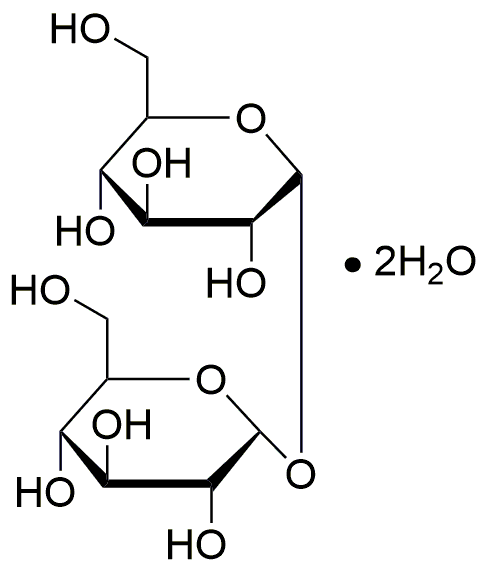D(+)-Trehalose dihydrate is widely utilized in research focused on:
- Food Industry: This compound acts as a natural sweetener and stabilizer in various food products, enhancing flavor while retaining moisture, which is particularly beneficial in baked goods and confectionery.
- Pharmaceuticals: It serves as a protective agent for proteins and enzymes during freeze-drying processes, improving the stability and shelf-life of vaccines and biologics.
- Cosmetics: D(+)-Trehalose dihydrate is used in skincare formulations for its moisturizing properties, helping to protect skin cells from dehydration and oxidative stress.
- Biotechnology: Researchers leverage its unique ability to stabilize cellular structures, making it valuable in cell preservation and cryopreservation techniques.
- Agriculture: It is applied as a stress protectant for plants, enhancing their resilience to drought and extreme temperatures, thus improving crop yield and quality.
General Information
Properties
Safety and Regulations
Applications
D(+)-Trehalose dihydrate is widely utilized in research focused on:
- Food Industry: This compound acts as a natural sweetener and stabilizer in various food products, enhancing flavor while retaining moisture, which is particularly beneficial in baked goods and confectionery.
- Pharmaceuticals: It serves as a protective agent for proteins and enzymes during freeze-drying processes, improving the stability and shelf-life of vaccines and biologics.
- Cosmetics: D(+)-Trehalose dihydrate is used in skincare formulations for its moisturizing properties, helping to protect skin cells from dehydration and oxidative stress.
- Biotechnology: Researchers leverage its unique ability to stabilize cellular structures, making it valuable in cell preservation and cryopreservation techniques.
- Agriculture: It is applied as a stress protectant for plants, enhancing their resilience to drought and extreme temperatures, thus improving crop yield and quality.
Documents
Safety Data Sheets (SDS)
The SDS provides comprehensive safety information on handling, storage, and disposal of the product.
Product Specification (PS)
The PS provides a comprehensive breakdown of the product’s properties, including chemical composition, physical state, purity, and storage requirements. It also details acceptable quality ranges and the product's intended applications.
Certificates of Analysis (COA)
Search for Certificates of Analysis (COA) by entering the products Lot Number. Lot and Batch Numbers can be found on a product’s label following the words ‘Lot’ or ‘Batch’.
*Catalog Number
*Lot Number
Certificates Of Origin (COO)
This COO confirms the country where the product was manufactured, and also details the materials and components used in it and whether it is derived from natural, synthetic, or other specific sources. This certificate may be required for customs, trade, and regulatory compliance.
*Catalog Number
*Lot Number
Safety Data Sheets (SDS)
The SDS provides comprehensive safety information on handling, storage, and disposal of the product.
DownloadProduct Specification (PS)
The PS provides a comprehensive breakdown of the product’s properties, including chemical composition, physical state, purity, and storage requirements. It also details acceptable quality ranges and the product's intended applications.
DownloadCertificates of Analysis (COA)
Search for Certificates of Analysis (COA) by entering the products Lot Number. Lot and Batch Numbers can be found on a product’s label following the words ‘Lot’ or ‘Batch’.
*Catalog Number
*Lot Number
Certificates Of Origin (COO)
This COO confirms the country where the product was manufactured, and also details the materials and components used in it and whether it is derived from natural, synthetic, or other specific sources. This certificate may be required for customs, trade, and regulatory compliance.


